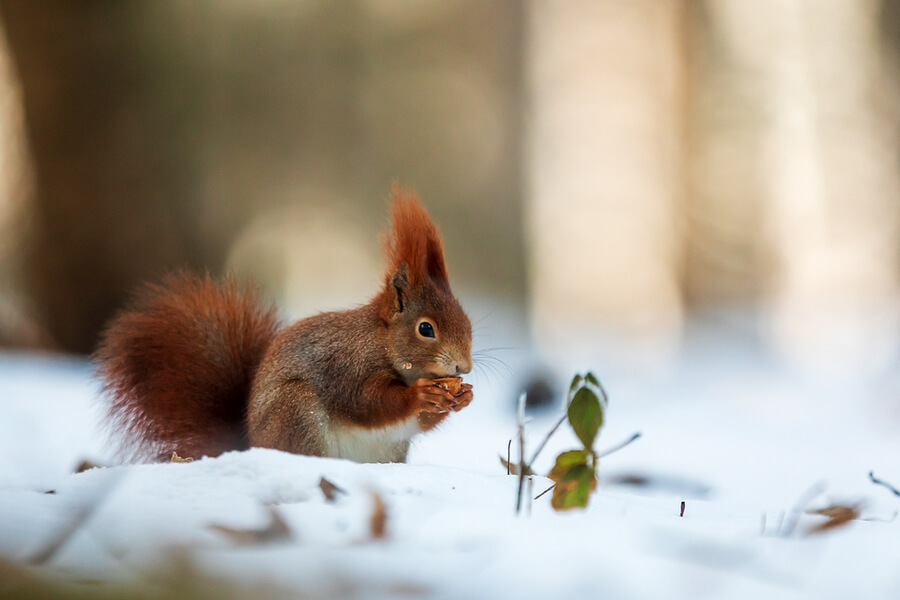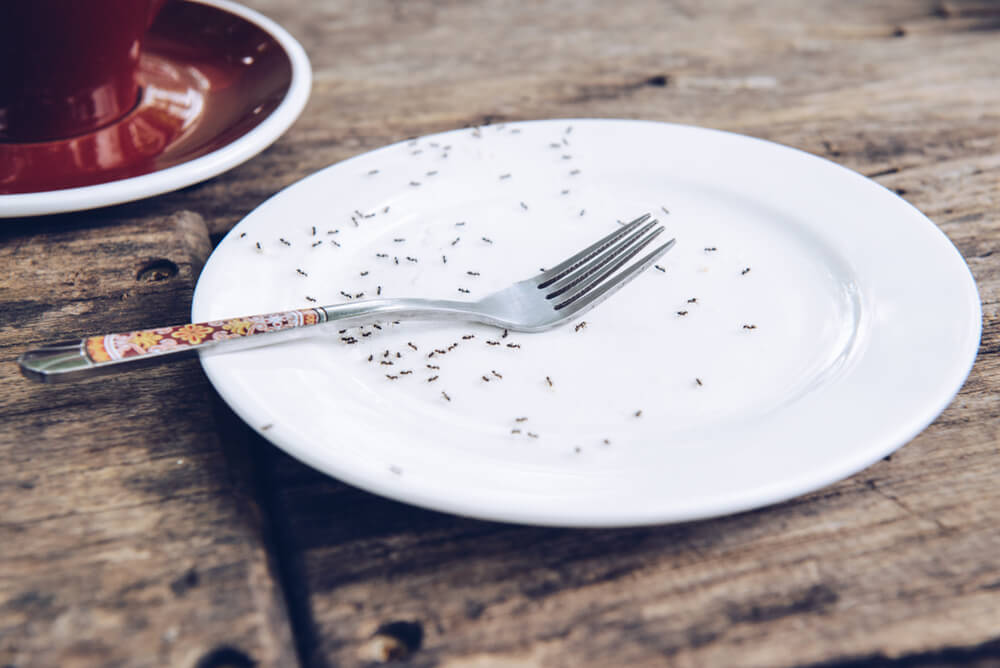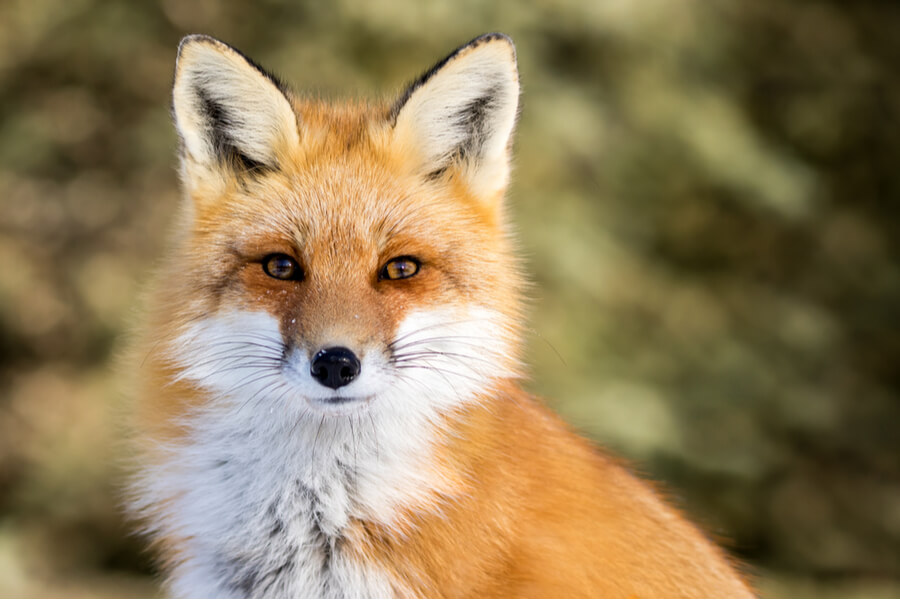Early Waking
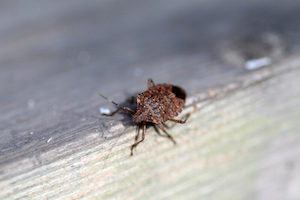 Why It Happens: Many pests enter hibernation-like states to conserve energy during winter. These pests have to awaken from time to time in order to eat and replenish their energy.
Generally, this happens on warm days, when the sun gives pests energy to remain active. On particularly warm days during the winter, you may notice pests you wouldn’t see normally.
Pests Affected: stink bugs, boxelder bugs, cockroaches, ticks, termites
What It Means For You: A lot of the insects that enter hibernation-like states tend to overwinter in walls and under floorboards. During warm periods, you may see these insects temporarily come out of their shelters.
Boxelders and stink bugs generally leave indoor shelters as soon as they’re awake. Roaches and termites won’t, however. These insects typically enter re-enter their hibernation-states or die out before spring. Make sure you dispose of dead pests before they begin to rot, or they could attract other pests!
Why It Happens: Many pests enter hibernation-like states to conserve energy during winter. These pests have to awaken from time to time in order to eat and replenish their energy.
Generally, this happens on warm days, when the sun gives pests energy to remain active. On particularly warm days during the winter, you may notice pests you wouldn’t see normally.
Pests Affected: stink bugs, boxelder bugs, cockroaches, ticks, termites
What It Means For You: A lot of the insects that enter hibernation-like states tend to overwinter in walls and under floorboards. During warm periods, you may see these insects temporarily come out of their shelters.
Boxelders and stink bugs generally leave indoor shelters as soon as they’re awake. Roaches and termites won’t, however. These insects typically enter re-enter their hibernation-states or die out before spring. Make sure you dispose of dead pests before they begin to rot, or they could attract other pests!
Sunbathing
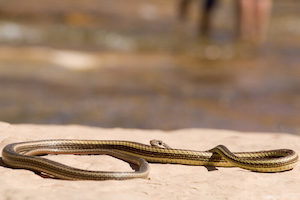 Why It Happens: Most pests are cold-blooded, which means they rely on external heat sources to regulate their temperatures. Winter tends to be particularly tough on cold-blooded pests, because it becomes difficult to find heat sources.
In order to survive, these pets have to find a warm shelter and go dormant. During warm days, these pests emerge to soak up as much warmth before they’re forced to seek shelter again.
Pests Affected: boxelder bugs, stink bugs, lady beetles, snakes
What It Means For You: Sunbathing pests tend to like surfaces that reflect sunlight as much as possible. On sunny days, they’ll congregate on concrete surfaces such as driveways, porches, or sidewalks. You may spot them there, often in large concentrations.
Some overwintering insects may also leave hiding places in your home to warm, reflective surfaces. Boxelders, stink bugs, lady beetles, and other insects may gather on windows or other glass surfaces.
Why It Happens: Most pests are cold-blooded, which means they rely on external heat sources to regulate their temperatures. Winter tends to be particularly tough on cold-blooded pests, because it becomes difficult to find heat sources.
In order to survive, these pets have to find a warm shelter and go dormant. During warm days, these pests emerge to soak up as much warmth before they’re forced to seek shelter again.
Pests Affected: boxelder bugs, stink bugs, lady beetles, snakes
What It Means For You: Sunbathing pests tend to like surfaces that reflect sunlight as much as possible. On sunny days, they’ll congregate on concrete surfaces such as driveways, porches, or sidewalks. You may spot them there, often in large concentrations.
Some overwintering insects may also leave hiding places in your home to warm, reflective surfaces. Boxelders, stink bugs, lady beetles, and other insects may gather on windows or other glass surfaces.
High Survival Rate
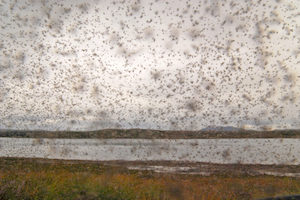 Why It Happens: Pests may be hardy, adaptable creatures, but winter is brutal. Every year, the pests that can’t find the food, moisture, or warmth the need die off by the thousands.
Mild winters affect how pests survive in a lot of ways. More shelter is available, and it’s easier to survive inside of that shelter. More food sources survive, and they’re more easily accessible. Snow melts, providing a source of moisture that many pests can use.
Pests Affected: ticks, moths, beetles, bees and wasps
What It Means For You: If more pests survive winter, more pests will be ready to reproduce in spring. More pests reproducing in spring results in a higher pest population during “peak” pest season. High pest populations mean more pest-related crop, structural, and ecological damage.
In particularly severe cases, pests could become so prevalent that they throw our region’s entire ecosystem out of balance! The more pests are outside, the more will attempt to get inside, as well. When a lot of pests survive winter, pest infestations in homes become more frequent--and annoying.
Why It Happens: Pests may be hardy, adaptable creatures, but winter is brutal. Every year, the pests that can’t find the food, moisture, or warmth the need die off by the thousands.
Mild winters affect how pests survive in a lot of ways. More shelter is available, and it’s easier to survive inside of that shelter. More food sources survive, and they’re more easily accessible. Snow melts, providing a source of moisture that many pests can use.
Pests Affected: ticks, moths, beetles, bees and wasps
What It Means For You: If more pests survive winter, more pests will be ready to reproduce in spring. More pests reproducing in spring results in a higher pest population during “peak” pest season. High pest populations mean more pest-related crop, structural, and ecological damage.
In particularly severe cases, pests could become so prevalent that they throw our region’s entire ecosystem out of balance! The more pests are outside, the more will attempt to get inside, as well. When a lot of pests survive winter, pest infestations in homes become more frequent--and annoying.
Faster Growth
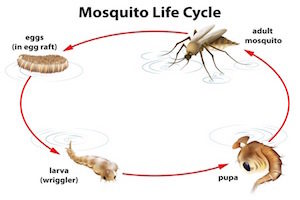 Why It Happens: The speed of virtually every pest’s life cycle depends almost entirely upon their access to resources. The more heat and food they have, the faster they’ll hatch, grow, and reproduce. Mild winters give them access to more of the resources they need to grow quickly.
Pests Affected: cockroaches, mosquitoes, spiders, ticks, mites, moths, bees and wasps
What It Means For You: The faster bugs can get through their life cycles, the faster and more often they reproduce. That means insect populations tend to skyrocket after mild winters.
You may not notice a dramatic change immediately, because these insects will still be in “winter” mode. By the time spring and summer roll around, however, it’ll be hard not to notice.
We realize this blog is kind of a bummer. Warm winters sound so nice; now we have to worry about those, too? If it’s any consolation, remember that no matter how out-of-control pests get, you’ve got us in your corner.
Give Varment Guard a call anytime, and we’ll be prepared to tackle any pest problem you can throw at us. Enjoy the weather (whatever it may be)!
Why It Happens: The speed of virtually every pest’s life cycle depends almost entirely upon their access to resources. The more heat and food they have, the faster they’ll hatch, grow, and reproduce. Mild winters give them access to more of the resources they need to grow quickly.
Pests Affected: cockroaches, mosquitoes, spiders, ticks, mites, moths, bees and wasps
What It Means For You: The faster bugs can get through their life cycles, the faster and more often they reproduce. That means insect populations tend to skyrocket after mild winters.
You may not notice a dramatic change immediately, because these insects will still be in “winter” mode. By the time spring and summer roll around, however, it’ll be hard not to notice.
We realize this blog is kind of a bummer. Warm winters sound so nice; now we have to worry about those, too? If it’s any consolation, remember that no matter how out-of-control pests get, you’ve got us in your corner.
Give Varment Guard a call anytime, and we’ll be prepared to tackle any pest problem you can throw at us. Enjoy the weather (whatever it may be)!

